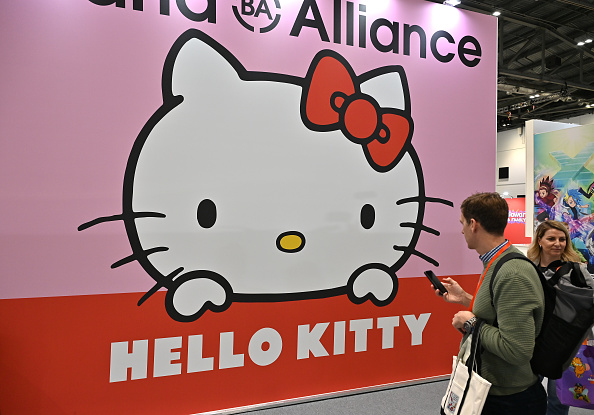Facebook Parent Meta Platforms Reports First Ever Revenue Drop
Social-media giant missed Wall Street’s sales expectation but added users—defying analysts’ projections.
Facebook parent Meta Platforms Inc. posted its first decline in revenue and issued a muted outlook on digital advertising as it contends with growing competition from rival TikTok.
The company reported quarterly revenue of US$28.8 billion, down almost 1% from a year earlier and slightly below the US$28.9 billion Wall Street was expecting. It marks the first time that the company has posted a quarterly drop in revenue from the year earlier.
“We seem to have entered an economic downturn that will have a broad impact on the digital advertising business,” Chief Executive Mark Zuckerberg said Wednesday. “It’s always hard to predict how deep or how long these cycles will be, but I’d say that the situation seems worse than it did a quarter ago,” he said on an earnings call.
Meta is grappling with a digital advertising market in upheaval from surging inflation and other factors that are causing a slowdown in ad spending. Google parent Alphabet Inc. on Tuesday reported the slowest rate of growth since the second quarter of 2020, when the pandemic crimped demand for advertising in some areas. Rival Snap Inc. reported its weakest-ever quarterly sales growth last week while Twitter Inc. reported a decline in revenue.
Meta also disclosed that Facebook’s daily active user base rose to 1.97 billion users. The figure was 1.96 billion three months ago. The increase defied expectations of analysts surveyed by FactSet who thought user numbers would fall.
The company posted a net profit of US$6.7 billion for the second quarter, the third quarter in a row Meta’s bottom line has fallen. The company hasn’t experienced such a slump since the fourth quarter of 2012.
The weak advertising demand was reflected in Meta’s average price per ad, which fell 14% in the quarter. A year ago, the company reported an increase of 47%, year over year, for its average price per ad.
The company said it continued to face challenges in targeting ads as a result of changes made by Apple Inc. to the iPhone’s operating system. Chief Operating Officer Sheryl Sandberg, on her last earnings call before she departs Meta after 14 years, said the company is adapting its business to do better ad targeting—with less user data—with products such as click-to-message ads, which open a chat with a business whenever a user clicks on the ad.
Such ads are already a multibillion-dollar business growing at double digits, she said. “We are hugely optimistic about this area of our business, and I am very convinced it will work,” Ms. Sandberg said.
Chief Financial Officer David Wehner said the company, like others, is feeling the pinch from the strong dollar, which is weighing on the top line.
Meta’s shares have retreated since the company posted quarterly results in February that showed a sharper-than-expected decline in profit, gloomy revenue outlook and dip in daily users.
Meta’s stock closed more than 6% higher and fell more than 4% after hours following the results.
The company also said it expects its total expenses for 2022 to be between US$85 billion and US$88 billion, down from the company’s previous outlook of US$87 billion to US$92 billion. The company attributed the lowered forecast to a reduction in hiring and overall expense-growth plans for the year.
Mr. Zuckerberg repeated that the company plans to slow the pace of long-term investments and steadily reduce head-count growth over the next year.
“This is a period that demands more intensity,” Mr. Zuckerberg said. “And I expect us to get more done with fewer resources.”
Meta is going through a period of transition. Mr. Zuckerberg in April said the company would change how users would see content, in a bid to boost engagement. The company would use artificial intelligence to recommend content to Facebook and Instagram users from around those social networks, rather than solely showing users content from accounts they already follow. The effort mimics one of the signature features of rival TikTok, which Mr. Zuckerberg in February said posed stiff competition for Meta.
Nearly one in six posts shown on Facebook and Instagram feeds are now coming from accounts that users don’t follow and are based on artificial intelligence recommendations, according to stats shared by Mr. Zuckerberg. That could rise to nearly one in every three posts shown to users coming from accounts they don’t follow by the end of 2023.
During the quarter, Meta saw a 30% increase in the time that users are engaging with Reels, the company’s answer to TikTok short-form videos, Mr. Zuckerberg said Wednesday.
Meta, however, doesn’t yet monetize Reels at the levels of some of its other features.
“In the near term, the faster that Reels grows, the more revenue that actually displaces from higher monetizing surfaces,” Mr. Zuckerberg said. “In theory, we could mitigate the short-term headwind by pushing less hard on growing Reels. But that would be worse for our products and business longer term.”
Mr. Zuckerberg added that Reels ads are on pace to generate US$1 billion in annual revenue.
Earlier this year, Meta said it planned to slow the pace of some of its long-term investments and adjust hiring plans. In May, the company disclosed a sharp slowdown in hiring, and in June, the company’s head of engineering told his managers in an internal memo to identify and report low performers so they could force those employees out. Earlier this month, the company let go of 368 contractors, including several custodial staff, at its Menlo Park, Calif., headquarters.
The company on Tuesday also said it planned to raise the price of its Quest 2 virtual-reality headset by nearly 34% to US$399.99, citing a rise in the costs to make and ship the products.
The company’s Reality Labs division, which includes VR hardware, posted revenue of US$452 million. Analysts expected it to generate US$431 million in quarterly sales.
Separately, the Federal Trade Commission said Wednesday it is seeking to block Meta from acquiring Within Unlimited Inc. and its virtual-reality dedicated fitness app, Supernatural. The deal, the FTC alleges, would lessen competition in the market and violate antitrust laws. Meta rejected the FTC’s position and said the purchase would be good for the development of the virtual-reality market.
The company also announced that come November, Mr. Wehner will transition into chief strategy officer, a new role at the company. Succeeding him as CFO will be Susan Li, Meta’s current vice president of finance. Mr. Wehner has served as Meta’s CFO since June 2014.
Reprinted by permission of The Wall Street Journal, Copyright 2021 Dow Jones & Company. Inc. All Rights Reserved Worldwide. Original date of publication: July 28, 2022.
 Copyright 2020, Dow Jones & Company, Inc. All Rights Reserved Worldwide. LEARN MORE
Copyright 2020, Dow Jones & Company, Inc. All Rights Reserved Worldwide. LEARN MORE
This stylish family home combines a classic palette and finishes with a flexible floorplan
Just 55 minutes from Sydney, make this your creative getaway located in the majestic Hawkesbury region.
Impact investing is becoming more mainstream as larger, institutional asset owners drive more money into the sector, according to the nonprofit Global Impact Investing Network in New York.
In the GIIN’s State of the Market 2024 report, published late last month, researchers found that assets allocated to impact-investing strategies by repeat survey responders grew by a compound annual growth rate (CAGR) of 14% over the last five years.
These 71 responders to both the 2019 and 2024 surveys saw their total impact assets under management grow to US$249 billion this year from US$129 billion five years ago.
Medium- and large-size investors were largely responsible for the strong impact returns: Medium-size investors posted a median CAGR of 11% a year over the five-year period, and large-size investors posted a median CAGR of 14% a year.
Interestingly, the CAGR of assets held by small investors dropped by a median of 14% a year.
“When we drill down behind the compound annual growth of the assets that are being allocated to impact investing, it’s largely those larger investors that are actually driving it,” says Dean Hand, the GIIN’s chief research officer.
Overall, the GIIN surveyed 305 investors with a combined US$490 billion under management from 39 countries. Nearly three-quarters of the responders were investment managers, while 10% were foundations, and 3% were family offices. Development finance institutions, institutional asset owners, and companies represented most of the rest.
The majority of impact strategies are executed through private-equity, but public debt and equity have been the fastest-growing asset classes over the past five years, the report said. Public debt is growing at a CAGR of 32%, and public equity is growing at a CAGR of 19%. That compares to a CAGR of 17% for private equity and 7% for private debt.
According to the GIIN, the rise in public impact assets is being driven by larger investors, likely institutions.
Private equity has traditionally served as an ideal way to execute impact strategies, as it allows investors to select vehicles specifically designed to create a positive social or environmental impact by, for example, providing loans to smallholder farmers in Africa or by supporting fledging renewable energy technologies.
Future Returns: Preqin expects managers to rely on family offices, private banks, and individual investors for growth in the next six years
But today, institutional investors are looking across their portfolios—encompassing both private and public assets—to achieve their impact goals.
“Institutional asset owners are saying, ‘In the interests of our ultimate beneficiaries, we probably need to start driving these strategies across our assets,’” Hand says. Instead of carving out a dedicated impact strategy, these investors are taking “a holistic portfolio approach.”
An institutional manager may want to address issues such as climate change, healthcare costs, and local economic growth so it can support a better quality of life for its beneficiaries.
To achieve these goals, the manager could invest across a range of private debt, private equity, and real estate.
But the public markets offer opportunities, too. Using public debt, a manager could, for example, invest in green bonds, regional bank bonds, or healthcare social bonds. In public equity, it could invest in green-power storage technologies, minority-focused real-estate trusts, and in pharmaceutical and medical-care company stocks with the aim of influencing them to lower the costs of care, according to an example the GIIN lays out in a separate report on institutional strategies.
Influencing companies to act in the best interests of society and the environment is increasingly being done through such shareholder advocacy, either directly through ownership in individual stocks or through fund vehicles.
“They’re trying to move their portfolio companies to actually solving some of the challenges that exist,” Hand says.
Although the rate of growth in public strategies for impact is brisk, among survey respondents investments in public debt totaled only 12% of assets and just 7% in public equity. Private equity, however, grabs 43% of these investors’ assets.
Within private equity, Hand also discerns more evidence of maturity in the impact sector. That’s because more impact-oriented asset owners invest in mature and growth-stage companies, which are favored by larger asset owners that have more substantial assets to put to work.
The GIIN State of the Market report also found that impact asset owners are largely happy with both the financial performance and impact results of their holdings.
About three-quarters of those surveyed were seeking risk-adjusted, market-rate returns, although foundations were an exception as 68% sought below-market returns, the report said. Overall, 86% reported their investments were performing in line or above their expectations—even when their targets were not met—and 90% said the same for their impact returns.
Private-equity posted the strongest results, returning 17% on average, although that was less than the 19% targeted return. By contrast, public equity returned 11%, above a 10% target.
The fact some asset classes over performed and others underperformed, shows that “normal economic forces are at play in the market,” Hand says.
Although investors are satisfied with their impact performance, they are still dealing with a fragmented approach for measuring it, the report said. “Despite this, over two-thirds of investors are incorporating impact criteria into their investment governance documents, signalling a significant shift toward formalising impact considerations in decision-making processes,” it said.
Also, more investors are getting third-party verification of their results, which strengthens their accountability in the market.
“The satisfaction with performance is nice to see,” Hand says. “But we do need to see more about what’s happening in terms of investors being able to actually track both the impact performance in real terms as well as the financial performance in real terms.”
This stylish family home combines a classic palette and finishes with a flexible floorplan
Just 55 minutes from Sydney, make this your creative getaway located in the majestic Hawkesbury region.






















